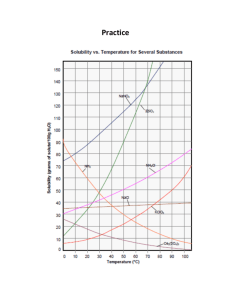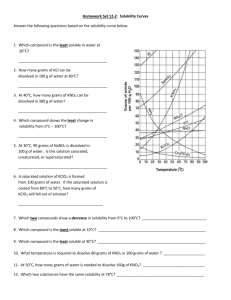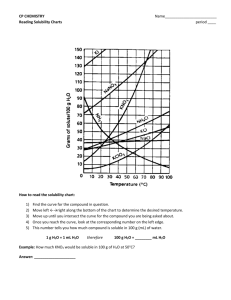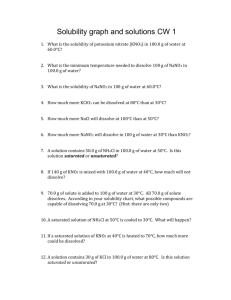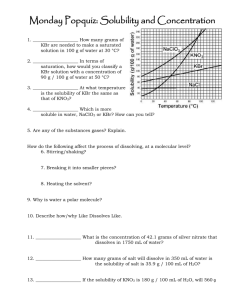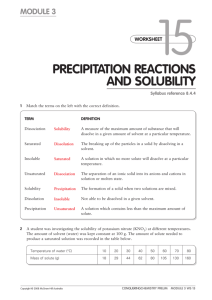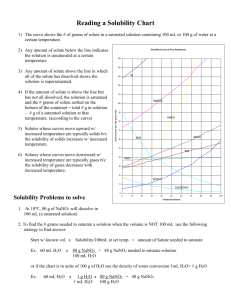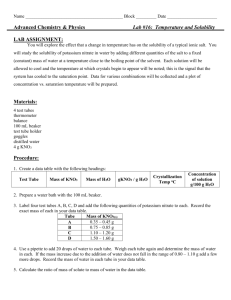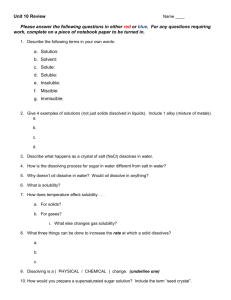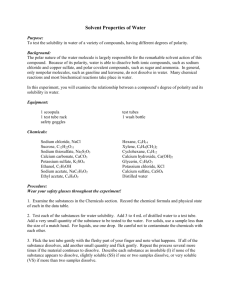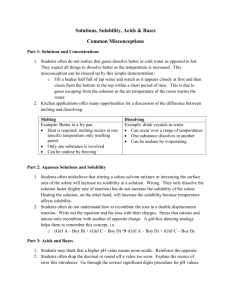CP CHEMISTRY Name: Introduction to Solubility Curves WS ___
advertisement
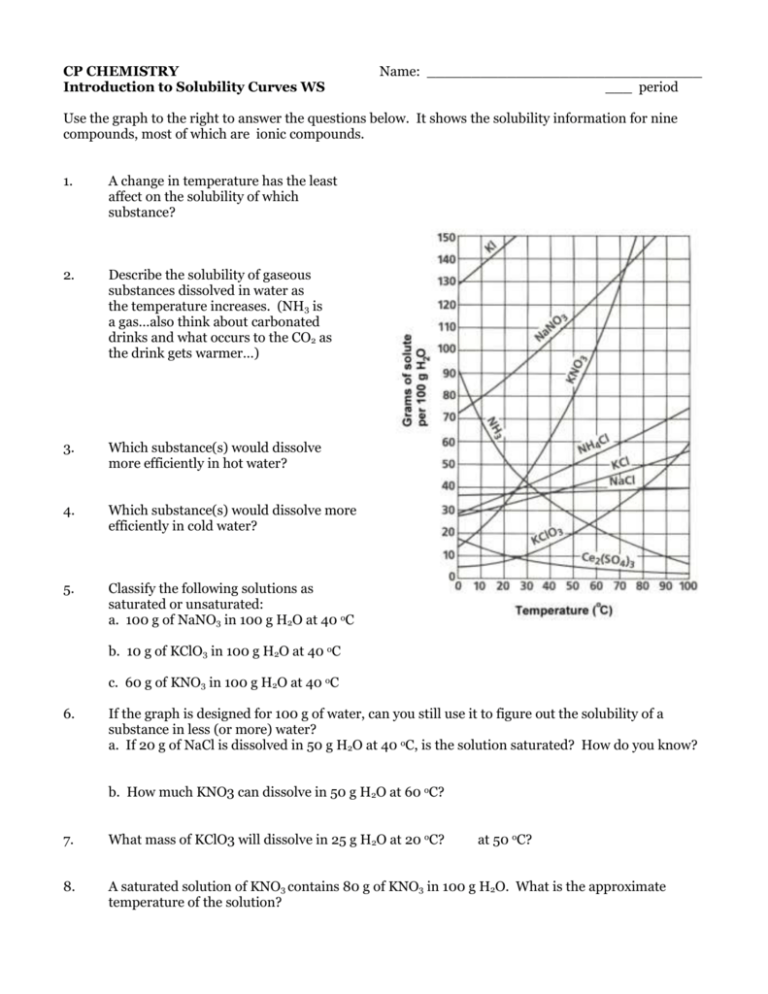
CP CHEMISTRY Introduction to Solubility Curves WS Name: _______________________________ ___ period Use the graph to the right to answer the questions below. It shows the solubility information for nine compounds, most of which are ionic compounds. 1. A change in temperature has the least affect on the solubility of which substance? 2. Describe the solubility of gaseous substances dissolved in water as the temperature increases. (NH3 is a gas…also think about carbonated drinks and what occurs to the CO2 as the drink gets warmer…) 3. Which substance(s) would dissolve more efficiently in hot water? 4. Which substance(s) would dissolve more efficiently in cold water? 5. Classify the following solutions as saturated or unsaturated: a. 100 g of NaNO3 in 100 g H2O at 40 oC b. 10 g of KClO3 in 100 g H2O at 40 oC c. 60 g of KNO3 in 100 g H2O at 40 oC 6. If the graph is designed for 100 g of water, can you still use it to figure out the solubility of a substance in less (or more) water? a. If 20 g of NaCl is dissolved in 50 g H2O at 40 oC, is the solution saturated? How do you know? b. How much KNO3 can dissolve in 50 g H2O at 60 oC? 7. What mass of KClO3 will dissolve in 25 g H2O at 20 oC? at 50 oC? 8. A saturated solution of KNO3 contains 80 g of KNO3 in 100 g H2O. What is the approximate temperature of the solution? CP CHEMISTRY, Introduction to Solubility Curves WS, page 2 9. A solution containing 35.0 g NaNO3 in 100 g water is at a temperature of 20 oC. How much additional NaNO3 could be added to produce a saturated solution at that same temperature? 10. In an experiment, 130.0 g NaNO3 is added to a beaker of 100.0 g H2O at 95 oC. Apply this information and using the graph above, answer the following: a. Will all of the NaNO3 dissolve completely? How do you know? b. If the solution cools down, what will happen to the dissolved NaNO3? c. At 20 oC, how much NaNO3 will remain dissolved? How much will settle to the bottom of the beaker? 11. How much water is needed to completely dissolve 100 g of KNO3 at 40 oC?
